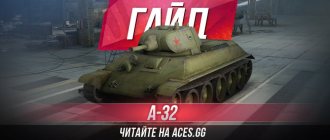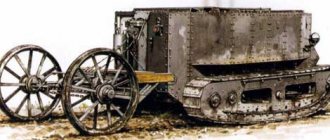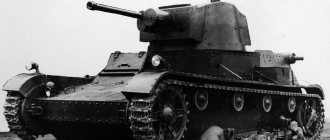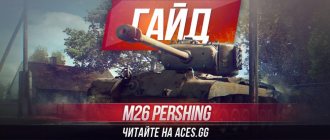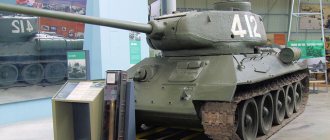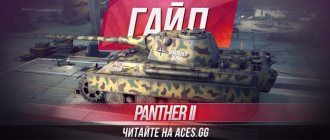Production and modernization of T-55 abroad
Production and modernization of T-55 abroad
T-55 tanks, except for the Soviet Union, were produced under license in Poland and Czechoslovakia. In these countries, as well as in Iraq, Israel, Egypt, Finland, Slovenia, Argentina and a number of others, their deep modernization was carried out, during which the firepower, security, and mobility of the combat vehicle were enhanced. Several modified versions of the tank were produced in China and Romania.
T-55AM "Merida". The tank is equipped with the Merida fire control system
Polish tank T-55. Additionally armed with Soviet Shmel anti-tank guided missiles
Release of T-55AM in Poland
T-55 tanks have been produced in the city of Gliwice since 1964, and later the T-55 A began to be produced here. In total, about 5,000 vehicles of all modifications were built.
In the mid-1980s, Poland began a deep modernization of its tanks. It was conducted using Soviet documentation, but with some “local variations.” T-55AM tanks received additional padded armor on the frontal parts of the turret and hull, as well as on the bottom. They were equipped with side screens and vertical steel sheets to cover the external fuel tanks; The RMS caterpillar was also used. We improved the thermoacoustic insulation of the fighting compartment, installed an OPS-68M1 X-ray meter, and ZOD-2 equipment to disinfect the tank. Eight launchers for smoke grenades (WWGD-1 “Erb” or WPD-1 “Tellur”) were placed on each side of the turret.
A special feature of the Polish T-55AM is a specially developed “Merida” fire control system with a laser rangefinder, a ballistic computer, a passive night sight and an atmospheric sensor. The rangefinder was integrated into the gunner's sight; a T-shaped weather sensor was mounted in the front of the turret roof, which was a characteristic feature of the Polish vehicle.
The T-55AM was also equipped with a detection and warning system for laser irradiation of the tank - WPL-1 "Bobrawa".
As a result of modernization, the tank's combat capabilities have significantly improved, but its weight has increased by 4.4 tons, and its power-to-weight ratio has decreased.
In addition to the battle tank, the WZT-2 armored tractor was developed and mass-produced in Poland based on the T-55A; In total, about 600 cars were produced. Bridge layers MT-55 and BLG-67 were built in small quantities, also based on the T-55A.
The front part of the turret of the Kladivo tank with a fire control system. Laser rangefinder on the gun mantlet
Rod with sensors of the detection and indication system SDIO
Czechoslovakian tank T-55AM2 "Kladivo"
Release of T-55AM1 and T-55AM2 in Czechoslovakia
Czechoslovakia received a license to produce tanks in 1964. First, the ZTS (Zavod Trucanske Strojarne) plant in the Slovak city of Martin produced the T-55, and from 1967 to 1982 - the T-55A, a total of 3820 units were built.
In the 1980s, an original two-stage modernization program was adopted here, the final result of which was the Czech T-55AM2. At the first stage, the Kladivo fire control system developed in Czechoslovakia with a ballistic computer and a laser rangefinder was installed on the tanks - its use significantly increased the shooting accuracy at ranges up to 4000 m. Then, detection and display system devices were installed in the rear of the turret SDIO, which notified the crew that the tank was captured by an enemy laser sight. Tanks that underwent such modernization were assigned the index T-55AM1.
At the second stage of modernization, Czechoslovak vehicles received the 9K116-1 Bastion guided weapon system, and at the same time the tank was equipped with a 1K13BOM laser target illumination device. The Kladivo fire control system was retained.
Additional multi-layer armor required an increase in engine power - a more powerful 620-horsepower V-55AM2 engine was installed. The fuel system was modified so that external additional barrels could be connected to the main tanks. The gun barrel was covered with a heat-protective casing. Smoke grenade launchers (8 pieces) were installed on the right side of the turret.
After the changes were made, the tank received the index T-55AM2, with the Bastion KUV - T-55AM2-B.
T-55AM2 were in service with the armies of Czechoslovakia, Hungary, and the GDR.
In addition to the battle tank, the VT-55A armored tractor was developed in Czechoslovakia based on the T-55A; 1,820 vehicles were produced.
Czechoslovakian armored tractor VT-55A based on the T-55 tank
Having received a license to produce tanks, China began producing the modernized Type 69 in the mid-1980s.
Chinese family "T" and "Jaguar"
Based on the T-54/55, modifications of Type T tanks were mass-produced in China.
Having received a license to produce the T-54A, tanks began to be produced in the city of Baotou, known under the symbol “Type 59”. Then, based on the components and assemblies of the T-55, in the mid-1980s they switched to the Type 69.
In the late 1980s, China tried to join efforts to modernize the Type 59 with the United States, and in 1989 the American-Chinese Jaguar was born. The tank had a 105-mm M68 rifled gun with a heat-insulating casing, an electronic fire control system - the one developed for the American light Stingray, a two-plane weapon stabilizer, and a main sight with a built-in laser rangefinder.
Externally, the Jaguar was significantly different from its prototype. The new turret consisted of flat armor plates mounted at various angles.
A column of Type 59 tanks leaves the hold of a landing ship
American-Chinese "Jaguar" with a rifled 105-mm gun, electronic fire control system and engine developed for the light American tank "Stingray"
T-55AM tank of the Azerbaijani army at the parade in Baku
The upper part of the hull was recreated - an additional armor plate appeared in the frontal part, and the engine compartment and fender fuel tanks were covered with armor. Engine Detroit Diesel 8V-92TA with 750 hp. They took it from the Stingray almost unchanged, as did the XTG-411 automatic transmission. Improved American-made torsion shafts were introduced into the suspension design, and tracks with RMS were used.
As a result, the tank's weight increased to 42 tons.
It was believed that the Jaguar would find demand in third world countries, especially in those where our T-54/55 and Chinese Type 59/69 are in service.
Romania: T-55 - the basis of the TR-580
Romanian designers, taking the T-54/55 units as a basis, began to produce their own tank TR-580, then TR-85. Their production was carried out at a plant in the city of Braşev.
The TR-85 was equipped with a German DE-830CP diesel engine with a power of 840 hp. However, this led to the need to increase the length of the hull, which, in turn, required the use of a suspension with six rollers.
Beginning in 1977, T-55 tanks began to be equipped with a Chinese-made laser range finder and ballistic computer, as well as side screens; the armament was supplemented with a 12.7 mm anti-aircraft machine gun.
Romanian tank TR-85. The installation of a more powerful German diesel engine forced us to increase the length of the hull and install a suspension with six rollers
Upgraded TR-85M1 with fire control system
Iraqi T-55 "Enigma" with additional hull and turret armor
Iraqi version of the T-55 modernization. The tank is equipped with a 125 mm 2A46 smoothbore gun with an automatic loader
"Enigma" from Iraq
In the 1980s, Iraq, which had a significant number of T-55s in service, made its own attempts to modernize them.
In 1989, at an arms exhibition in Baghdad, the T-55 was demonstrated, equipped with a 125 mm 2A46 smoothbore gun, which was the standard gun for the Soviet T-72; the loading mechanism was also used from it. By the way, production of 2A46 was established in Iraq for the T-72 tanks purchased from us. Due to the use of an automatic loader, the crew of the vehicle was reduced to three people.
The tank received enhanced armor protection. Multilayer armor panels were installed on the front parts of the hull, protective screens were installed on the front and sides of the turret, and a remote module was installed on the rear, designed to balance the mass of additional armor. The sides of the hull were protected with anti-cumulative screens. As a result, the total combat weight of the vehicle increased to 40 tons. Such T-55s with enhanced protection received the designation “Enigma” in the West.
Israeli tank "Tiran"-5 at the Arms Exhibition in Latrun, 1975
Iraqi T-55 tanks captured by the Israelis in combat operations in the Persian Gulf. 1991
Israeli trophies
After the 1967 war, Israel received the richest trophies, among which were several hundred tanks, including about 400 T-54 and T-55. Almost 200 of them were operational. Feeling a constant need to replenish their tank fleet, the Israelis decided to include them in the armored forces.
It was during this period that the country’s military command carried out the standardization of tank weapons - the Israeli army had several types of tanks with different guns, which made it difficult to supply military units with ammunition. The 105-mm M68 rifled gun, an American version of the English L7, was chosen as a single weapon. They decided to install it on all existing tanks - Shermans, Centurions, M48, M60 and captured T-54, T-55, T-62.
Some of the T-55s underwent major modifications: they were equipped with American 8V-71T diesel engines and 7.62 mm Browning machine guns. The vehicles also received radios used by the Israeli army and a new fire extinguishing system. Boxes for storing tools and crew property were welded onto the turret and hull of the vehicles. T-55 tanks converted in this way were called “Tiran”-5.
According to some sources, 250 T-54/55 tanks were converted in Israel, including trophies from 1973.
In the early 1980s, Tiran-5 tanks received mounted dynamic protection and a heat-insulating casing for the gun barrel; They also installed a 7.62 mm machine gun on the commander's cupola and a 12.7 mm machine gun on the gun mantlet. The B-55 engine was replaced with a 610-horsepower eight-cylinder air-cooled Teledyne-Continental diesel engine coupled with an Allison hydromechanical transmission. The weight of the vehicle was 37 tons, and the maximum speed was 60 km/h.
After the 1982 war in Lebanon, a need arose to create a heavy armored personnel carrier for operations in urban environments, with armor protection not inferior to a tank. Captured T-54/55s were chosen as the base for it. Their mass conversion into armored personnel carriers, called the Akhzarit armored personnel carriers, began in 1988. In total, about 250 cars were produced.
Tank "Tiran"-5 at a parade in Jerusalem passes the government podium
Israeli heavy armored personnel carrier "Ahzarit" based on the T-55
Takom | No. 2041 | 1:35
Data
Company: Takom Title: T-55 AM Russian Medium Tank Number: 2041 Scale: 1:35 Type: Complete set Released: 2016 | First release - new set Barcode: 4897051420477 (EAN) Topic: T-54 » Tanks (Vehicles)

